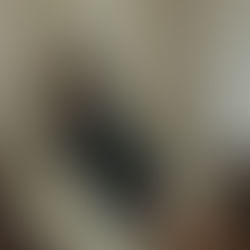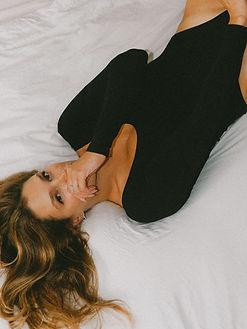The Real Conversation Behind Shay Mitchell’s Rini Backlash - Here's What Everyone’s Missing
- R A E
- 4 days ago
- 5 min read
Shay Mitchell’s New Skincare Line For Kids Is Getting Blasted, And Here’s Why I Disagree
There’s always that one celebrity launch that divides the internet in half, and this week, it’s Shay Mitchell’s new skincare brand, Rini. The line, designed for kids as young as three, has sparked endless debate about marketing, childhood, and what we consider “too young” for skincare. While many people are criticizing it as another case of consumerism gone wild, I actually think there’s more nuance here.
Is it wrong to sell skincare to children? On paper, yes. But in reality, that’s already happening, just not in the safest way.
When I was a kid, my version of beauty play was glittery body sprays and flavored lip balms. I had a fake makeup kit from the Barbie aisle, and a bubblegum-scented ChapStick felt like luxury. That was the extent of it. But kids today are growing up in a different landscape. They have YouTube channels, iPads, TikToks, and access to trends that we couldn’t have imagined at eight years old. They’re watching tutorials, copying routines, and in many cases, using adult skincare products with ingredients that aren’t designed for their skin.
In a world like that, a brand like Rini doesn’t feel like a step backward. It feels like a necessary pivot.
That’s where I think Shay Mitchell got it right.
However, it would have made much more sense if the brand had drawn the line at kids over six. Let’s be honest, a three-year-old in a face mask feels a little performative, no matter how gentle the formula is. At that age, skincare should be about sunscreen, hydration, and maybe a splash of water before bedtime—not sheet masks. Setting a slightly older age range would have balanced the curiosity of young kids with a more realistic sense of need and understanding.
Why Everyone Is So Upset & the Controversy
When Shay Mitchell announced Rini, she described it as “self-care for kids,” not beauty. The line includes animal-shaped sheet masks made with soothing ingredients like aloe and vitamin E. She said it was inspired by her daughter, who often asked to join her skincare routine.
Almost instantly, social media erupted. Many people accused her of pushing beauty standards on children, arguing that skincare marketing feeds into the same insecurities that have already overtaken adults. Pediatricians voiced concern that kids don’t need products beyond soap, sunscreen, and moisturizer. Commenters warned that this was the start of “Sephora Tweens 2.0.”
And I get it. The beauty industry has blurred the line between self-expression and self-critique. What starts as fun can quickly become a pressure to “fix” something that doesn’t need fixing. Nobody wants to see five-year-olds worrying about their pores.
But here’s the thing: kids are already in this world. They’re already watching their parents do multi-step routines, playing with products that aren’t made for them, and absorbing content about skincare online. The question isn’t how to stop it. It’s how to make it safer.
Why I Think Shay Got It Right
The reality is, beauty isn’t going anywhere. Kids are curious, and curiosity isn’t the problem. The problem is the kind of products they have access to.
Most of the skincare kids are currently using wasn’t designed for them. It’s packed with harsh actives, acids, and retinoids that can disrupt their delicate skin barrier. That’s far more dangerous than a gentle mask made with aloe vera.
That’s why Rini makes sense to me. It’s not pretending kids need skincare. It’s acknowledging that they’re already exploring it, so we might as well guide them toward something that’s safe and clean. It’s like child-proofing beauty. You can’t ban curiosity, but you can control what it touches.
If anything, I think Shay’s approach reframes skincare as a bonding ritual, not a beauty one. It’s about creating small moments of calm and care—something kids rarely get in the overstimulating chaos of modern life. If a mother and her daughter share that through a five-minute sheet mask, I don’t see that as dangerous. I see it as intentional.
The Bigger Conversation
There’s a fine line between teaching self-care and selling insecurity. And the responsibility of that line sits on both sides—the brand and the consumer.
The conversation around kids and beauty has become polarized because the internet treats every new product as either revolutionary or toxic. But not everything has to live in extremes. Maybe skincare for kids doesn’t have to be about “looking better.” Maybe it can just be about taking care of yourself.
We can still criticize how beauty marketing often targets impressionable minds. We should. But if we’re being honest, the issue is bigger than one brand. It’s about a world where kids grow up watching beauty tutorials instead of Saturday morning cartoons. It’s about algorithms, not aloe masks.
Rini is a reflection of that reality, not the cause of it.
What I Like
I like that the products are made with clean ingredients and that Shay consulted pediatric chemists to ensure they’re safe for developing skin. I like that the focus is on hydration, soothing, and fun rather than “correcting” or “perfecting.”
I also like the messaging behind the brand. It’s not telling kids they need to be beautiful. It’s telling them they deserve to take care of themselves, gently and playfully. And that, to me, is a healthy message to learn early. The packaging is also clever—it feels bright, inviting, and playful, not overly polished or adult. It looks like something meant for kids, not a mini version of your mother’s night serum.
What Could Be Better
Where I think Rini could improve is in how it frames the conversation publicly. The brand needs to be crystal clear about what it stands for: wellness, not beauty. The messaging around “skincare” can still trigger people who associate it with vanity. Words matter. So does tone. It would have also been a lot easier if she marketed into towards kids over the age of 6 at the least because using face masks on a baby that is just 3 years old does seem a tad bit exaggerated to say the least.
I’d also like to see more education built into the brand—videos, guides, or collaborations with dermatologists that teach both parents and kids about proper skin health. That way, Rini can help shift the narrative from “kids and skincare” to “safe habits and self-care.”
The internet loves outrage, especially when it comes to celebrity beauty brands. But sometimes, the outrage misses the point.
We can’t pretend kids aren’t influenced by what they see online. We can’t stop them from being curious about the products they see their parents using. But we can shape the way they interact with that curiosity.
Shay Mitchell’s Rini isn’t a symptom of a problem. It’s a response to one. It might not be perfect, but it’s a step in the right direction—toward making the beauty space more inclusive, thoughtful, and safe for every age.
Love,
Rae















.jpg)